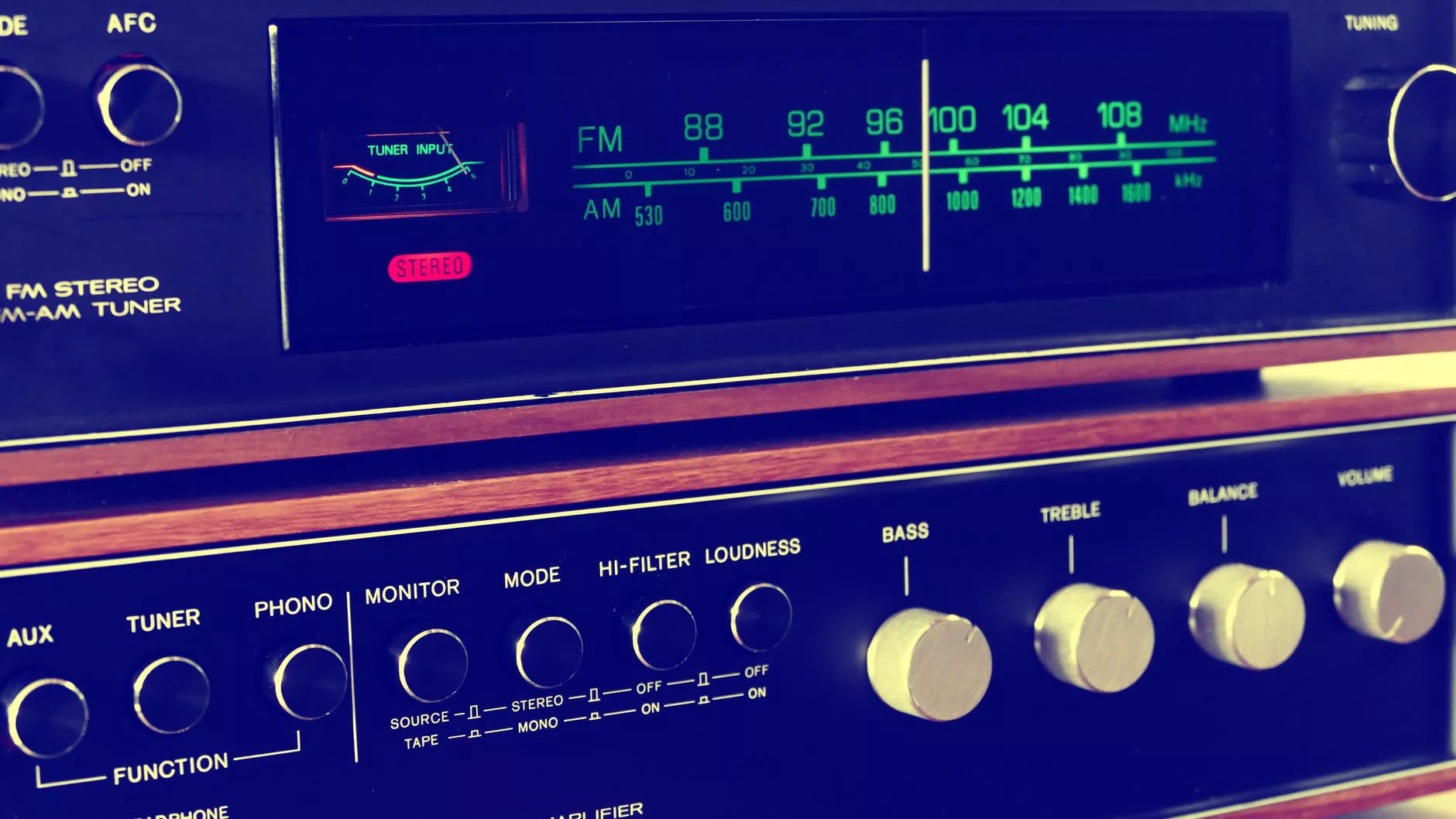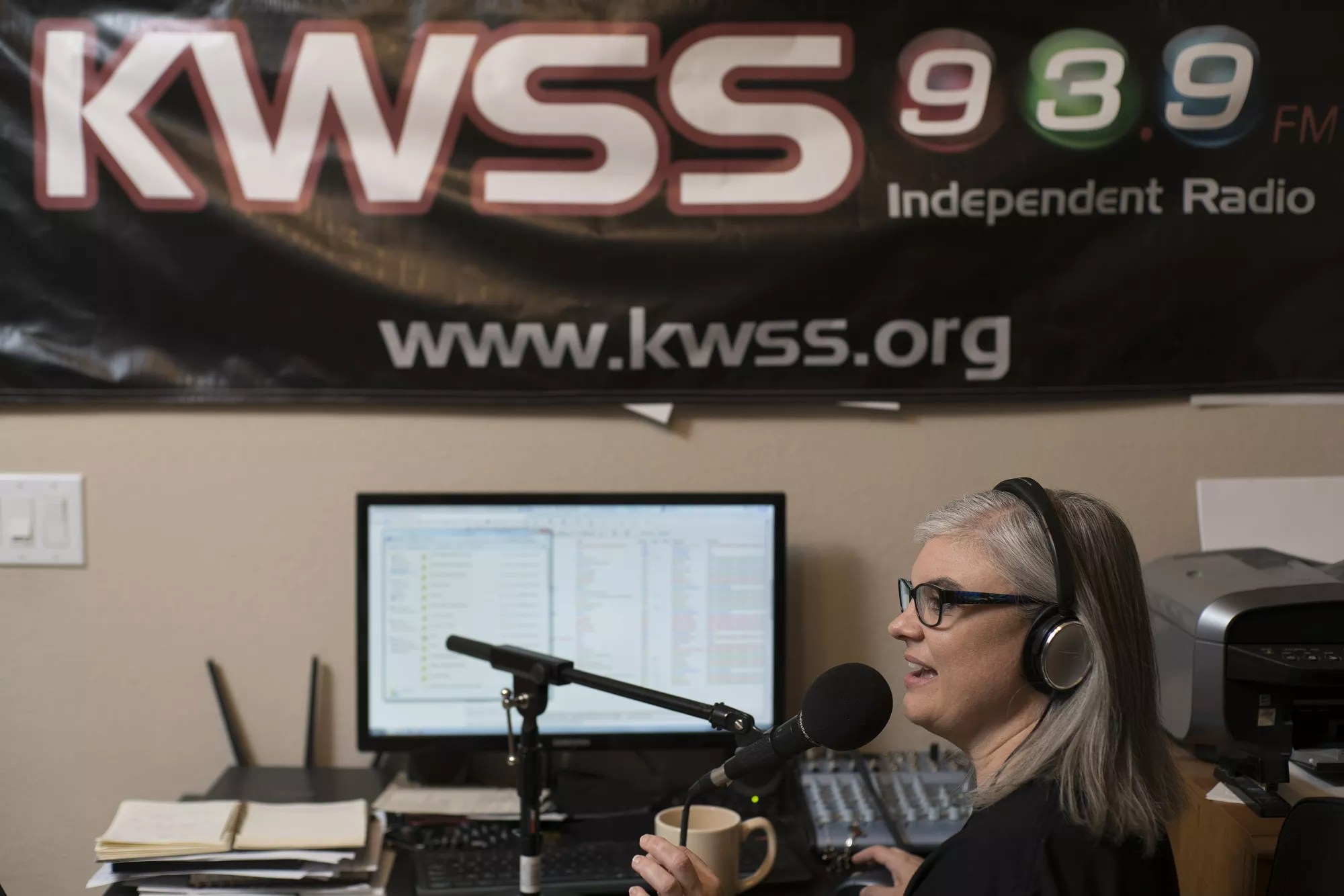
Anthony/Pexels

Audio By Carbonatix
When the COVID crisis hit last year, the Valley’s arts and music scene essentially shut down. A few clubs and theaters tried workarounds, like outdoor-only shows or converting into coffee houses, but mostly they went dark. Some bands turned to livestreaming, though many others weren’t even able to gather in-person to practice. And the touring industry ceased immediately, bringing a loss of momentum in Phoenix’s continued rise as a national music destination.
But one sector of the music industry didn’t face the same devastation: the city’s radio stations, many of which have spent this period blazing a trail through the great unknown.
It helped that, even before these COVID-related shutdowns, stations across the dial were in the midst of a boom period of sorts.
“It was looking good for us; 2020 was a good year,” says Dani Cutler, the morning DJ and marketing/promotions head at KWSS. “In January and February 2020, I was making big, big plans for the station.”
Adds Cutler, “And the surprising thing was, we had an uptick in listeners in the early months of the pandemic. We didn’t dip because more people were working from home or whatever they were doing. They were not going out as much or at all during the shutdown in the early months.” Cutler notes they’d seen new listeners from as far away as Norway.
Trip Reeb serves as the VP and market manager for Hubbard Radio Phoenix, which controls KUPD, KDKB, KSLX, KDUS, and KZAG. He says their entire portfolio remained stable in terms of listeners, especially “relative to how stations in other markets are doing.”
Even The Blaze, ASU’s student-run radio station, started 2020 with some 400 members, an especially high figure, according to station manager Jordan Spurgeon.
All of this activity tracks with numbers from a national perspective. In a report from Nielsen, listenership is at 97 percent of what it was in March 2020, with “significant recovery” experienced in October 2020. According to Reeb, Hubbard’s research says that “around 85 percent of users have returned to radio” already.
The question, then, is what about radio as a format made it so resilient amid a global pandemic? Larry McFeelie, the brand/content manager at KUPD, says it was less about losing or adding listeners; instead, their habits merely shifted.
“We had our struggles, but I would say that we’ve had the same amount of people listening with different listening habits,” he says. “You may have seen X amount of listeners listening at 7 a.m. Now, they’re all listening at 8 a.m.” Reeb echoed similar sentiments – no commute meant similar changes across the board.

Dani Cutler live on KWSS.
Mark Lipczynski
At the same time, these stations never had to cease operations. Cutler says DJs at KWSS have been recording at home since the station’s inception. The Blaze had students recording at home via smartphones.
But as Spurgeon explained, it may have also had something to do with a sense of community – something lacking for people across all of 2020.
“Radio is especially vital right now because you get a lot more perspectives from people,” Spurgeon says. “One of the duties of radio is opinions, and you can agree or disagree with people, but you get a sense of community. There’s a lot of great shows and hosts that really just bring a lot of excitement. It’s very similar to people that like watching certain YouTubers.”
Chris Kline, president and CEO of the Arizona Broadcasters Association, takes that idea one step further: COVID was a perfect reminder of radio’s long-term value.
“You can harken back to the tech boom of the late ’90s, and everyone’s spouting off about the decline of radio,” Kline says. “Then something like 9/11 happens, and all of a sudden there is this hyper-focus on wanting to feel connected to a community around you because you’re scared. The same thing happened over the last year, and I can’t think of any moment where it’s been as dramatic.”
“I’m definitely trying to use radio to remind our listeners that this is a temporary thing and to just hang on,” Cutler says. She adds that throughout COVID, KWSS held several Zoom interviews with artists to maintain some level of consistency in the programming.
Cutler says they also highlighted the Valley’s many struggling small businesses provide both support and a similar sense of consistency.
“I would focus on segments that I already had on my morning show,” Cutler says. “For instance, my ‘Morning Good’ segment was always a little fluff, feel-good story, just to get people going on their day. But then I switched it. And for a while there I was using that segment every day to focus on a local business that you could support, whether you get takeout or you buy something from them online.” In March, Cutler/KWSS gave a nod to Stinkweeds for both their status in the local scene and ongoing commitment to the mask mandate.
The Blaze conducted on-air interviews with COVID nurses. McFeelie and KUPD added specialty programming (new blocks or segments to expand daily coverage), with a focus on spotlighting local favorites. Examples included a “Metallica A to Z Weekend,” which McFeelie says gave listeners a chance to celebrate music in a way that avoided gimmicks in favor of more earnest interpersonal connection.
“A lot of radio stations in town, some within our building, have done the fake concert type of program: ‘If I crank up the radio really loud, maybe it’ll feel like I’m at a concert.'”
Despite these stations’ ongoing success amid dire circumstances, they’re not looking to a return to “normalcy.” McFeelie says KUPD is working to better prepare for the next life-altering event.
“I think that we need to continue, at least as a radio station, to be prepared for anything that might happen, like broadcasting from home,” McFeelie says. “To run those sort of scenarios within the building and say, ‘Hey, what would happen if the next year we didn’t have any events?'”
Reeb says the preparation goes further. As research shows that “[some] people just aren’t going to return to the office,” Hubbard Radio is looking into podcasting as a way to keep pace with listeners’ ever-shifting habits.
In a greater sense, all of this has inspired talk about how these stations can better foster a sense of community. That includes a greater commitment to donations and fundraising by KUPD. At one point last year, the station held an “adopt a roadie” program to raise funds for workers in the live entertainment sector.
“My hope is that the people who discovered us during this past year will stick with us and realize that is not going away, and we’re still going to be able to bring everything,” Cutler says. “It’s just going to get better when we can actually function as a somewhat normal society again.”